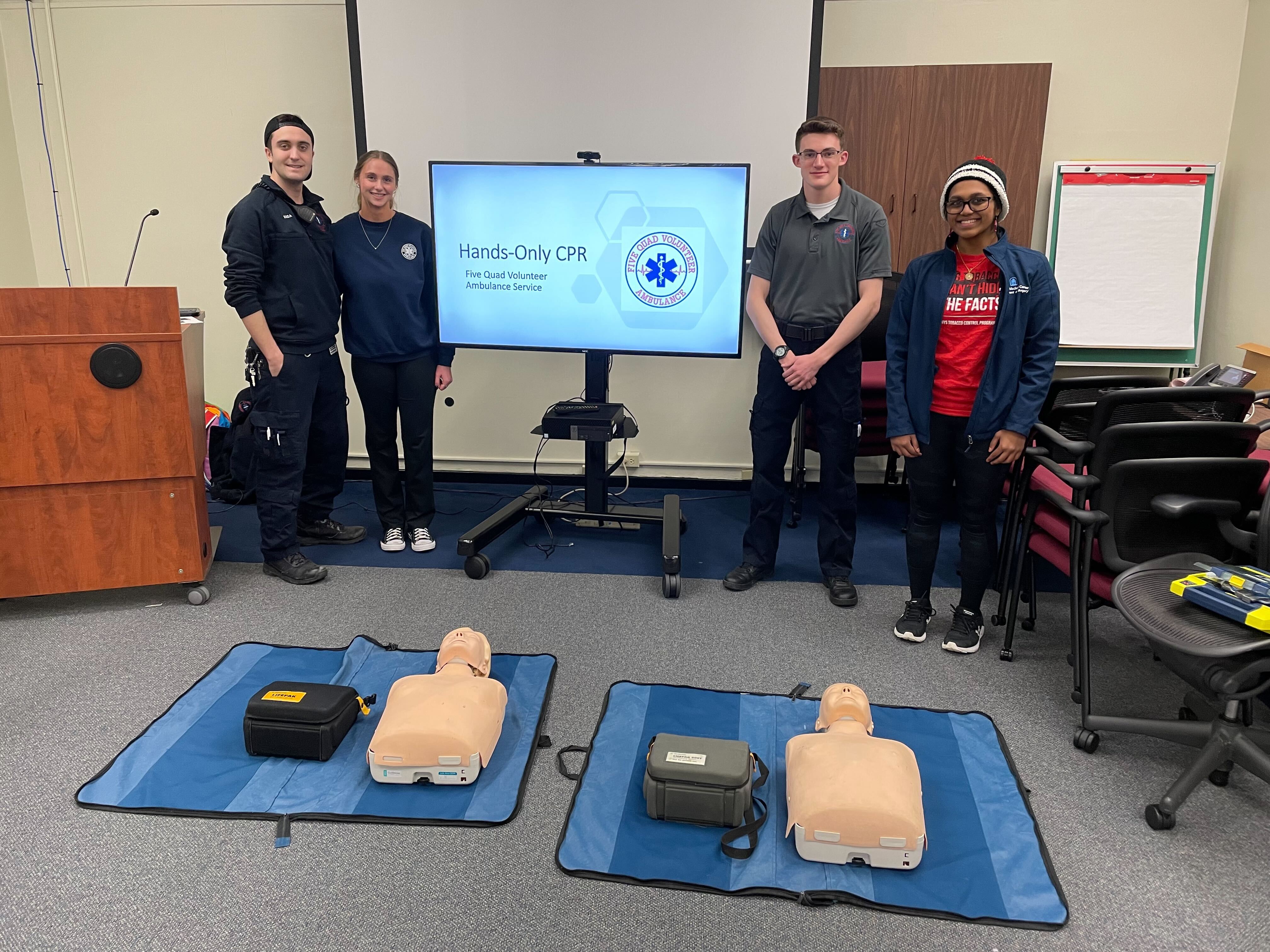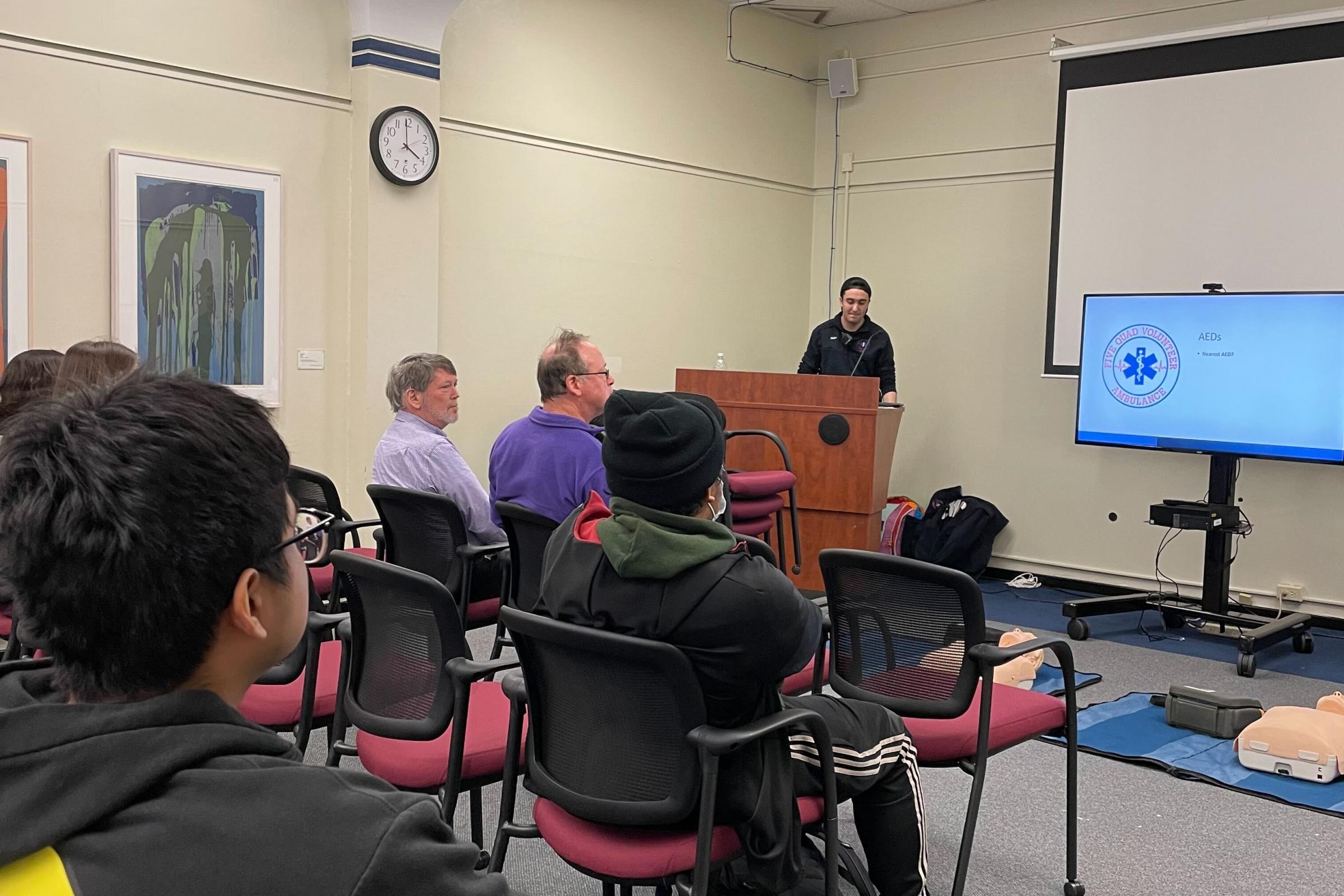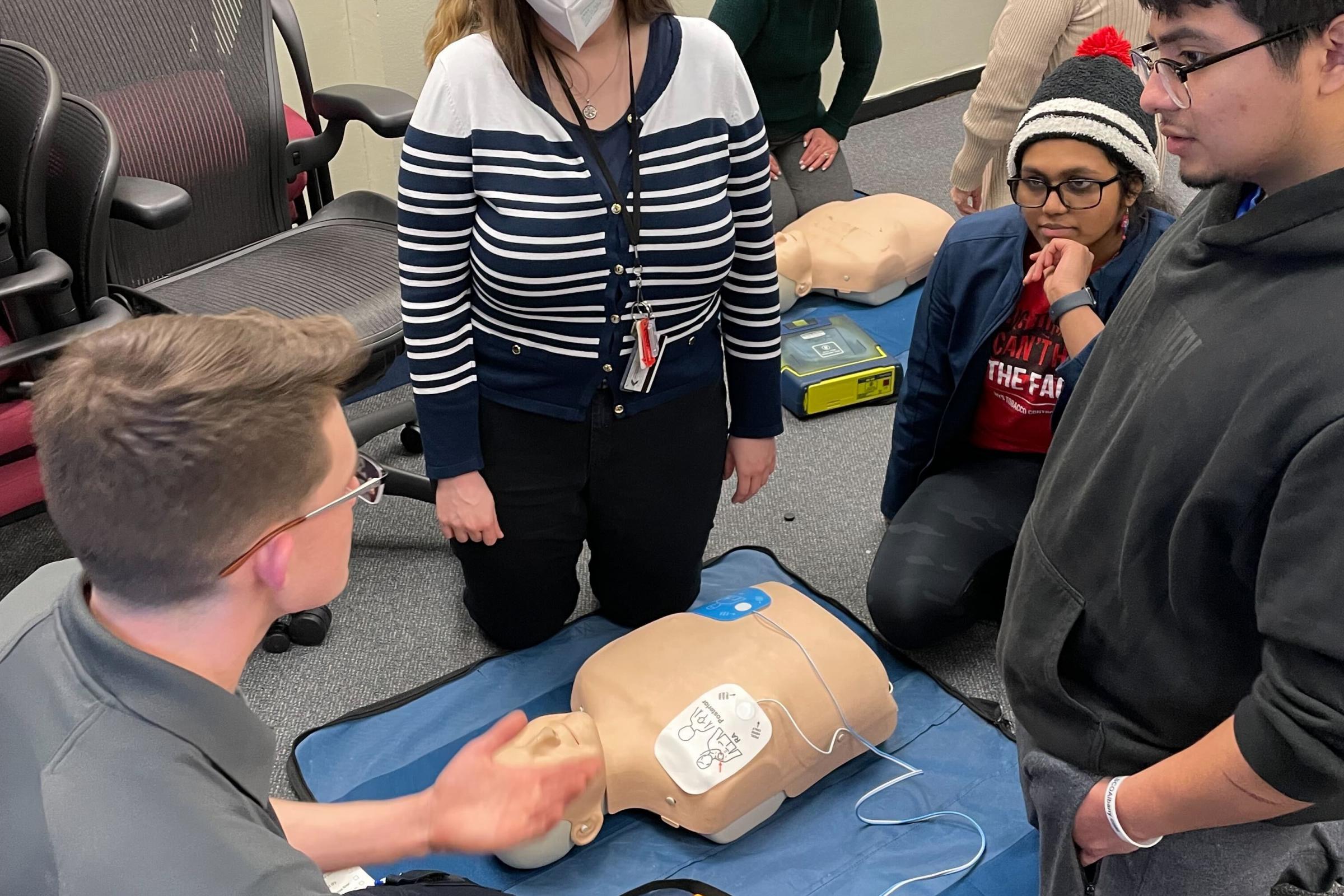For obvious reasons, the events of a Monday Night Football game rarely shape decisions made at the University Libraries. The exception is when Bills safety Damar Hamlin suffered cardiac arrest after making a tackle during a game on January 2. On-field personnel administered CPR and treated him with an automated external defibrillator (AED), efforts credited with saving Hamlin’s life. The next morning, while discussing the incident at work, a common refrain popped up at the Libraries: We need to learn to CPR.

Five Quad volunteers
On Tuesday, March 7, the University Libraries’ Professional Activities Committee welcomed Five Quad Volunteer Ambulance Service to provide CPR and AED training. Led by sophomore Five Quad Chief Kevin Zoda, the training featured the assistance of student volunteers. The session began with a slideshow and video presentation. Afterwards, the members invited Libraries faculty and staff to try their hands at performing CPR—and using an AED—on test dummies.
The event proved overwhelmingly popular with those in attendance, some of whom had prior experience with CPR, and others who had none. “After being certified in CPR many years ago, I appreciated the opportunity to have a refresher and to learn how to use a defibrillator (AED),” said Ann Gunning, Library Personnel Coordinator. “The students from the Five Quad Volunteer Ambulance Service ably guided us with easy-to-remember instructions as we practiced the techniques, which helped me to feel confident again in performing CPR if needed.”
Brian King, an Office Assistant 2 in Shipping and Receiving, had this to say: “I have never taken a CPR course in my life, however I am glad I took it. Knowing that you have to check for signs before you begin to administer helped me appreciate the fact that discernment is needed before stepping into action.”
The training was also popular among Five Quad volunteers. Said Kevin, “I enjoy the trainings because it helps to get laypeople involved in emergency scenarios, where a patient’s chance of survival can be greatly improved if a bystander begins hands-only CPR. The Library staff sees thousands pass through every day, which increases the likelihood of them encountering a situation like this. Doing this training for University Libraries was great because the staff was eager to learn, asked meaningful questions, and immersed themselves in the training.”
Kevin is right. The gate counts at the University Libraries regularly exceed 30,000 persons annually. While no one wants to ever have to use these skills, the Libraries find it important to have them at the ready. As Brian said, “If it is offered again, I may go as a refresher course since it can be the difference between the life and death of an individual.”


